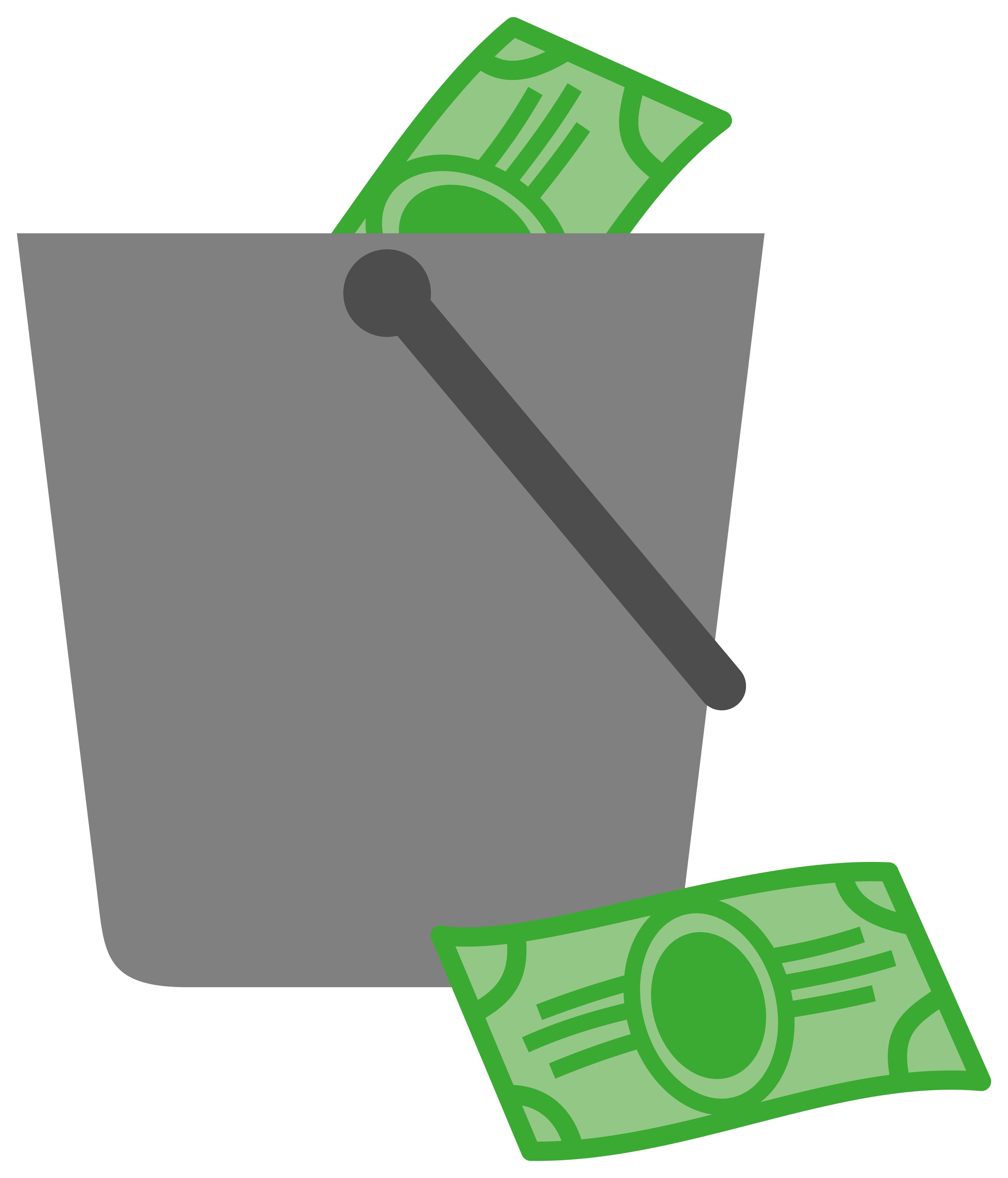How Entering a Higher Income Tax Bracket Affects Your Pay Cheque
by Kelly Gabriel
Income tax brackets in Canada can be a confusing subject. Many Canadians think that if a pay raise pushes you into a higher tax bracket, your total pay will be the same or worse than before because your taxes have gone up too. Sounds totally unfair, doesn’t it? Good thing that’s not quite how it works.
How Income Tax Brackets in Canada Really Affect Your Pay
If you take a look at the current federal and provincial rates for Canadian income tax brackets, you’ll see that whenever income reaches a new bracket, the tax rate increases as well (the numbers may change every year). People can get confused about how the tax rate increase affects your pay raise. For example, in 2021, the federal tax rate rises from 15% to 20.5% on income after $49,020 (up to $98,040).
So if Jeff earns $49,000 a year, then his income minus the federal income tax is $41,650. However, if he gets a pay raise to $50,000 a year, then would that all be taxed at 20.5%? If it was, then his income minus the federal tax would be $39,750, or less than what he had when he was earning $49,000! Thankfully, that’s not how it works.
 Canada uses marginal tax rates for personal income. This means that when your income reaches a higher tax bracket, its accompanying tax rate only hits the part of your pay that’s inside the higher bracket’s range. One way to think about this is to visualize a few buckets, where each bucket represents a tax bracket. With 2021 federal rates, the first bucket can be filled up to $49,020, and money in that bucket is taxed at 15%. The second bucket, which is for income from $49,020 to $98,040, can hold up to another $49,020, but what’s in the second bucket is taxed at 20.5%. The third bucket, which is for income from $98,040 to $151,987, can be filled up to $53,947, and the income in this bucket is taxed at 26%. There’s also a fourth bucket, and then the fifth and final one for everything over $216,511.
Canada uses marginal tax rates for personal income. This means that when your income reaches a higher tax bracket, its accompanying tax rate only hits the part of your pay that’s inside the higher bracket’s range. One way to think about this is to visualize a few buckets, where each bucket represents a tax bracket. With 2021 federal rates, the first bucket can be filled up to $49,020, and money in that bucket is taxed at 15%. The second bucket, which is for income from $49,020 to $98,040, can hold up to another $49,020, but what’s in the second bucket is taxed at 20.5%. The third bucket, which is for income from $98,040 to $151,987, can be filled up to $53,947, and the income in this bucket is taxed at 26%. There’s also a fourth bucket, and then the fifth and final one for everything over $216,511.
Examples of Marginal Tax Rates in Action
To illustrate how marginal tax rates work, let’s go back to Jeff and the 2021 federal rates. With his new and improved income of $50,000 a year, Jeff’s pay completely fills up the first bucket of $49,020. Since this bucket is taxed at 15%, he pays $7,353 in federal income taxes and has $41,667 left over (there are some other deductions yet, so this isn’t what ends up in his pocket). However, he still has $980 of income to pay federal tax on, and it will be taxed at 20.5%. So for this second bucket, he pays $200.90 in taxes and has $779.10 left over. Add the 2 buckets up, and he has about $42,446 left over. Remember that if Jeff were still earning $49,000, his income minus the federal tax would be $41,650. So even though his $1000 pay raise bumps him into the next tax bracket, his net income still increases!
Okay, one more example. Let’s say Teresa earns $120,000 a year. Here’s how that would be taxed federally with the bucket example:
- She fills the first bucket of $49,020 that’s taxed at 15%, leaving $41,667.
- She also fills the next bucket of $49,020 that’s taxed at 20.5%, leaving $38,970.90.
- She puts her remaining $21,960 into the third bucket which is taxed at 26%, leaving $16,250.40.
Add that all up, and Teresa's income minus federal taxes is about $102,598.
Never Let a Higher Tax Bracket Stop You from a Pay Raise
 The above examples show that you don’t lose money from entering a higher tax bracket – you’ll just get less net gains for the part of your income that falls into that higher bracket. Of course, real tax situations are more complicated than our imaginary Jeff and Teresa’s. For starters, you’ll have to pay a provincial income tax on top of the federal one, not to mention CPP and EI. There may also be deductions, credits, and other considerations (like union dues, pension contributions, self-employment income, and investment income) when it’s time to file your return.
The above examples show that you don’t lose money from entering a higher tax bracket – you’ll just get less net gains for the part of your income that falls into that higher bracket. Of course, real tax situations are more complicated than our imaginary Jeff and Teresa’s. For starters, you’ll have to pay a provincial income tax on top of the federal one, not to mention CPP and EI. There may also be deductions, credits, and other considerations (like union dues, pension contributions, self-employment income, and investment income) when it’s time to file your return.
Increasing your income can take a lot of hard work, whether you’re doing it through a raise, a promotion, investing, or starting a side hustle. Money isn’t the only thing that matters when making decisions that affect your pay, and you should always work towards a balance between financial stability and personal wellbeing. But as far as money is concerned, never let tax brackets stop you from getting a raise.
When you get a raise but are already doing just fine financially, consider putting that raise towards your RRSP. Doing this can bring your income for the year back down so that less or none of it goes into the next tax bucket with its higher rate. If you talk to your employer’s payroll department, that can even be done off your gross income instead of net – this will lower your tax refund, but raise your pay cheques a bit. However, keep in mind that if you withdraw from your RRSP, the money will count as income in the year it’s taken out. This could end up costing you more tax if your income ends up increasing. If needed, an accountant or Certified Financial Planner (CFP) can give you more info about tax brackets and how they affect your situation. You can also contact the Canada Revenue Agency or speak with your employer’s payroll department.
How to Make the Most Out of Your After-Tax Income
After putting in the hard work to get a pay raise, make the most out of your after-tax income with a budget. Taking charge of your finances through smart strategies like saving money can give you benefits that match or even go beyond a pay raise. If you want personal, one-on-one guidance to help figure this out, give your nearest non-profit credit counselling organization a call. A certified credit counsellor would be happy to review your situation with you and help you find ways to reach your financial goals. And if you got or are about to get a pay raise – congrats!
